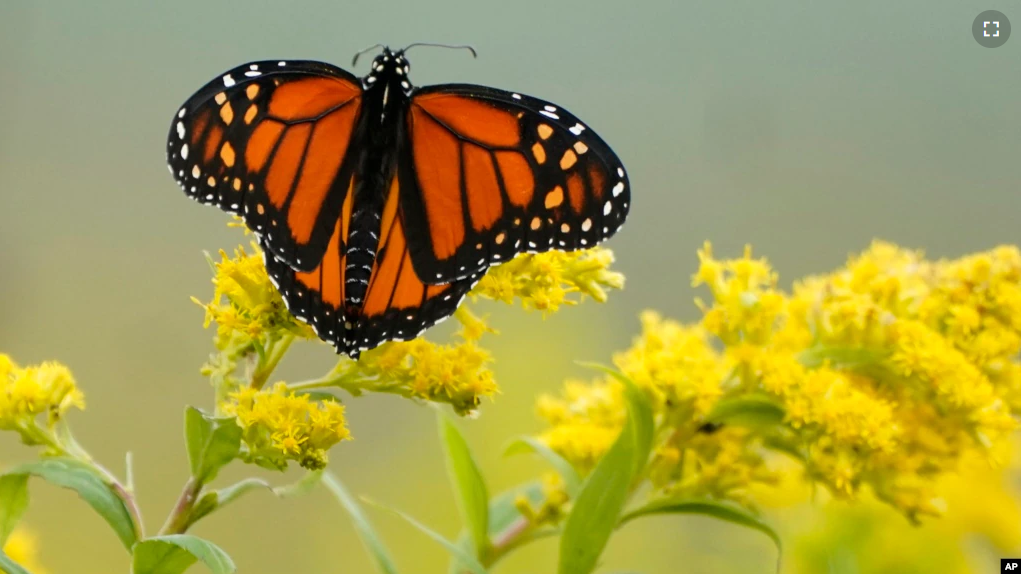The migrating monarch butterfly is considered an endangered species. Scientists say the dropping numbers of monarchs are due to climate change, loss of habitat and the use of pesticides -chemicals that kill insects – and herbicides – chemicals that kills plants.
But there are things that people living in the United States can do to help the beloved black-and-orange insects.
One of the quickest and best ways to help is to plant milkweed on your property. Milkweed is a kind of plant that has white juice. Monarch butterflies eat milkweed and lay their eggs there. They need milkweed to survive.
It is important to choose the right kind of milkweed. Dawn Rodney is a chief officer at the National Wildlife Federation in Reston, Virginia. She said not all milkweed is the same.
“There is an invasive species called tropical milkweed that we’re seeing more and more, and people are not understanding that it does more harm than good,” Rodney said.

Planting tropical milkweed in the United States is a problem because it is not native to the country. It blooms or flowers for longer periods of time. This can make it harder for monarchs to know when it is time to migrate.
To find the right kind of milkweed, you can use the National Wildlife Federation’s Native Plant finder.
Other plants, especially ones with flowers that have nectar, can be helpful to adult monarchs. Be sure to choose plants that are native to your area. These plants can be good-quality food sources for the butterflies.
It is a good idea to include plants that bloom later in the growing season. These plants can help give monarchs the energy they need for their yearly migration in autumn.
You can find a Monarch Nectar Plant List tool by the National Wildlife Federation in partnership with the Monarch Joint Venture and the Xerces Society at this website.
It is also important to know the source of the plants you buy.
Rodney said that different chemicals are used to keep the plants looking appealing to buyers. It is important to ask the garden center workers about pest-management practices.
The chemicals can hurt the next generation of butterflies. When butterflies lay their eggs on the plant, the caterpillars that are born will die as they eat the leaves of the plant.

Adult butterflies can die when they eat pollen and nectar of plants treated with the harmful pesticide called neonicotinoid.
You can prevent monarch deaths by buying from trusted, organic sources, or you can grow your own plants from seeds.
Next, think about the chemicals you use in your own garden. Chemicals can harm insects, including monarchs. They can also harm birds.
Natural or organic pesticides may also be also harmful. Use products like Neem oil only after dark, when butterflies are not as active. When the morning arrives, the product will be dry and not as effective. The butterflies will be safe.

Another way to help monarchs is to create a butterfly puddle area. Make a mud puddle or add water to sand in a sunny area. Set a flat rock in the middle of the area.
Butterflies can rest on the stone, soak up the sun and drink the water from the puddle. And you can sit and enjoy the beautiful monarchs.
I’m Faith Pirlo.
Jessica Damiano wrote this article for The Associated Press. Faith Pirlo adapted it for Learning English.
______________________________________________________________________
Words in This Story
species– n. class of plants or animals whose members have the same main characteristics and can breed with each other.
habitat – n. the natural environment of a plant or animal
invasive – adj. tending to spread
tropical – adj. of or occurring in the tropics
migrate – v. to travel to a different living place (temporary in the case of animals)
nectar –n. a sweet liquid produced by plants and used by bees in making honey
bloom – v. to produce flowers
pest-management – v. to control an animal or insect that causes problems for people especially by damaging crops
pollen – n. the very fine usually yellow dust that is produced by a plant and that is carried to other plants of the same kind usually by wind or insects so that the plants can produce seeds
puddle– n. a small amount of water, mud, etc., on the ground
